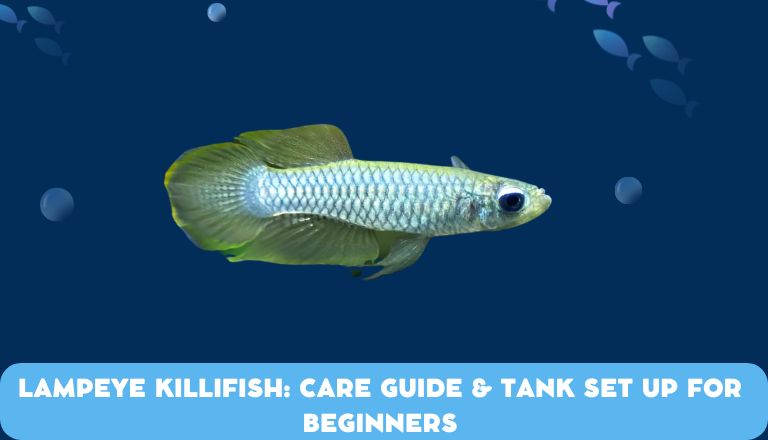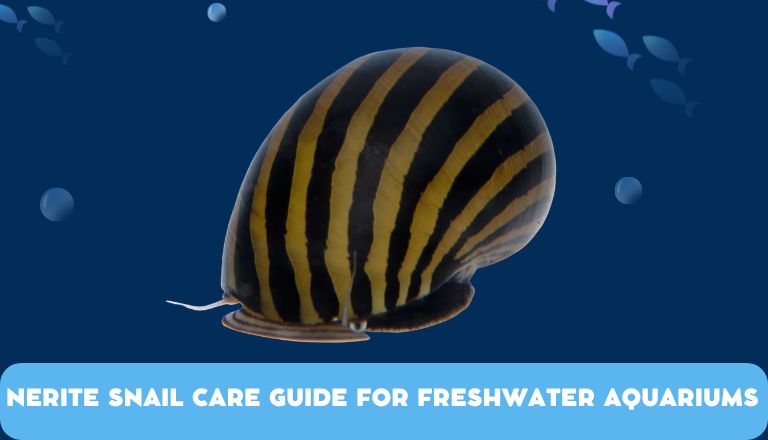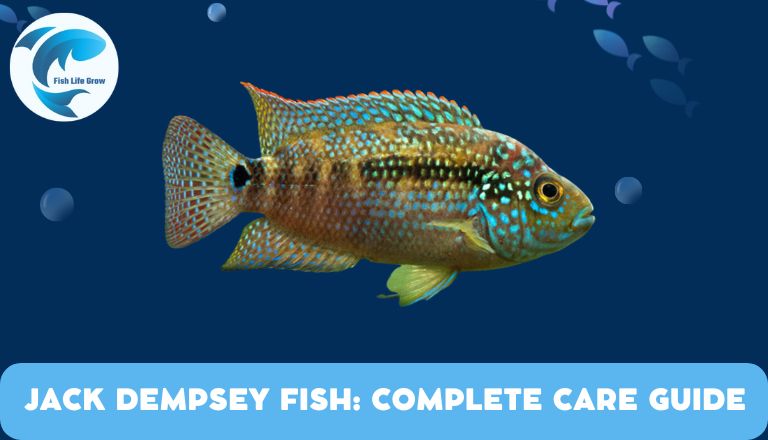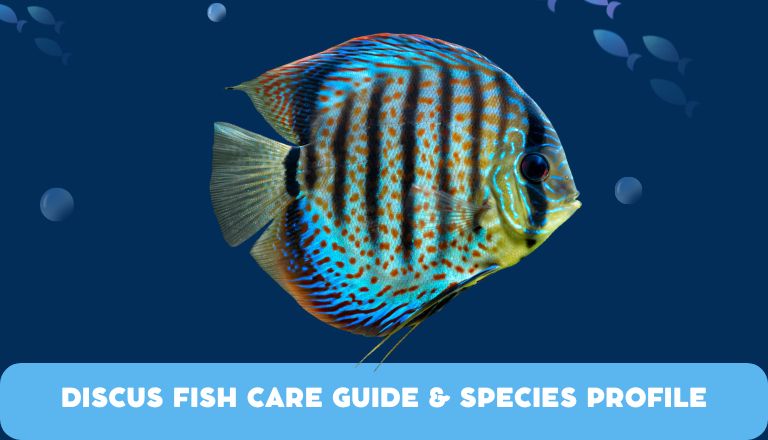Lampeye Killifish: Care Guide & Tank Set Up For Beginners
This care guide will help you care for Lampeye Killifish. We will cover setting up a tank, maintaining water quality, and feeding them. Whether you are new to fishkeeping or experienced, this article will give you the information you need to care for these colorful freshwater fish.
Lampeye Killifish Care Overview
Lampeye Killifish are colorful and peaceful freshwater fish. They are good for small aquariums and add color and activity. They need a clean tank with hiding spots and plants. They like soft, slightly acidic water and should be in groups of at least six. Choose tank mates carefully and keep the water clean for their health.

Appearance
Lampeye Killifish are colorful freshwater fish that aquarists love for their beautiful looks and calm behavior. They have long bodies with bright colors like gold and blue and stand out with their black eyes that inspired their name. These small, colorful fish have special eyes that shine in a certain light, making them noticeable in any tank.
Lampeye Killifish Size
Lampeye Killifish, also known as Poropanchax normani, are small fish that grow to about 1-2 inches long, so they are great for small aquariums. Their size can change based on diet, water quality, and tank conditions. Keeping them in a clean tank with hiding spots and suitable tank mates can help them grow and stay healthy.
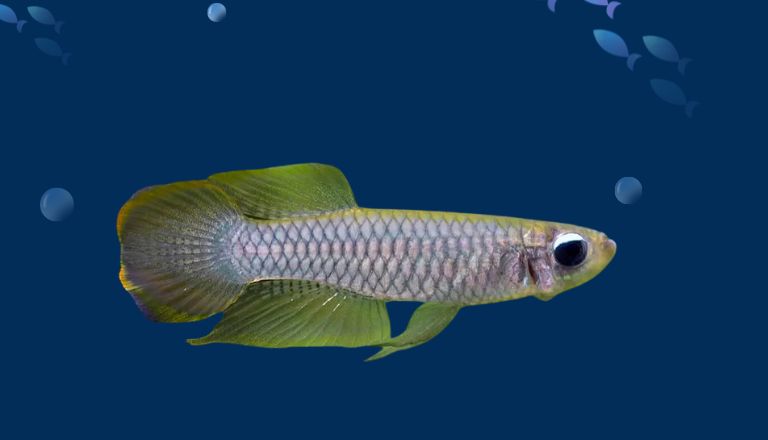
How To Set Up A Lampeye Killifish Tank
To set up a tank for Lampeye Killifish, consider their natural habitat. Aim for slightly acidic to neutral pH levels and soft to moderately hard water. Give them a variety of live or frozen foods for good health. Making their tank like their natural home will keep them happy and live longer.
Lampeye Killifish Tank Size
When preparing a tank for Lampeyes, use a tank that is at least 10 gallons in size. This will give the fish enough room to swim and socialize.
Filtration
Good filtration keeps the water clean in a tank. These fish don’t like strong currents, so use a gentle filtration system. Sponge filters or adjustable flow filters are good choices for creating a suitable environment.
Water Parameters
To keep your fish, maintain a temperature between 72-78 F (22-26 C) and a pH level of 6.0-7.5. Check ammonia, nitrites, nitrates, and water hardness regularly to ensure the water is good for your fish.
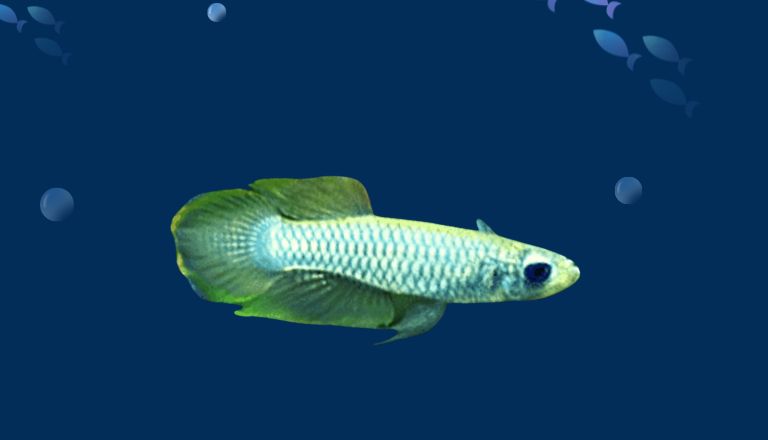
Heater
When you’re preparing a tank, keep the water temperature stable. Use a good heater to mimic their natural environment and help the fish stay healthy.
Substrate
Choosing the right substrate for your tank is important. Use sand or smooth gravel to keep your fish safe.
Lighting
Good lighting is important for plants and colorful fish. LED lights are a good option because they save energy and can be adjusted for brightness and color. The right amount of light will make your tank look nice and help your plants grow without harming your fish.
Plants and Decor
Choose live plants like Java Fern, Anubias, or Moss Balls. These plants hide spots and keep water clean. Avoid sharp decorations that could hurt fish. Use driftwood and smooth rocks to make caves for fish to explore and hide.
Floating plants like Water Sprite or Duckweed provide shade and reduce light to prevent algae.
Diet
Lampeye Killifish needs a varied diet to stay healthy. In the wild, they eat small insects, algae, and plants. In captivity, feed them a mix of live or frozen daphnia, bloodworms, brine shrimp, and good quality flake or pellet food. These fish enjoy hunting for live prey and need a mix of live foods and commercial fish food to stay healthy.
By providing a mix of live and commercial food, fish enthusiasts can help these fish thrive and observe their natural feeding behaviors.
Breeding
Breeding Lampeye Killifish can be a fun challenge for fish tank lovers. To breed them successfully, create the right environment and feed them well. Keep the water clean and at the right temperature and pH levels. Giving them live foods like daphnia or brine shrimp can help start the breeding process.
Watching their mating rituals, where males try to impress females, can be interesting. Breeding these fish takes time and focus, but it can be a rewarding project for fish fans.
Lampeye Killifish Tank Mates
Choose peaceful and small tank mates for your Lampeye Killifish. Good companions are small tetras like Neon Tetras or Ember Tetras, and smaller Rasboras like Chili Rasboras.
Avoid aggressive or larger fish that might scare or outcompete the Lampeye Killifish. Add bottom-dwellers like Corydoras Catfish to create a balanced aquarium with less competition for food and space.
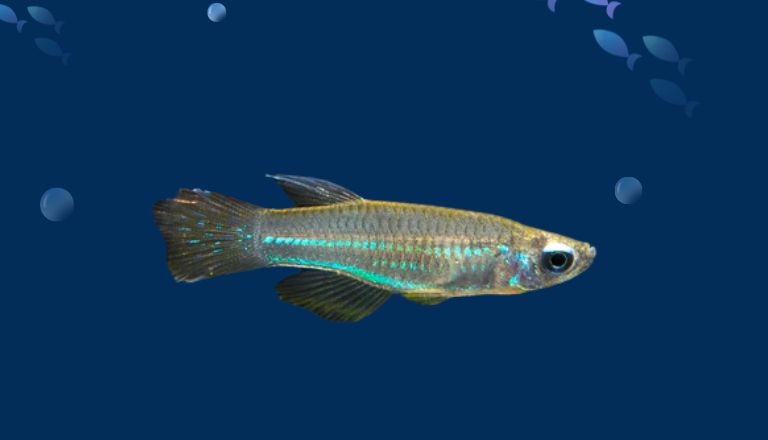
Make sure to have hiding spots and plants in the tank for the shy Lampeye Killifish. This will create a harmonious environment for all tank inhabitants to thrive.
Conclusion
Caring for Lampeye Killifish can be enjoyable for new fish owners. To care for them properly, set up their tank correctly, and meet their needs. Enjoy watching their bright colors and playful actions. Keep the water clean, provide hiding spots, and feed them a variety of foods. With proper care, Lampeye Killifish can live happily in your tank for a long time. Start caring for these beautiful fish today!
FAQs
Are Lampeye Killifish Aggressive?
Lampeye Killifish are calm fish that usually live well with others in a tank. They might get aggressive during breeding or when defending their space. To stop this, provide hiding spots and plants in the tank to give each fish its area.
Can Killifish Be Kept In A Community Tank?
Killifish can live with other fish in a tank, but choose their tank mates wisely. They are generally peaceful but may become territorial and aggressive towards smaller or slower fish. It’s recommended to keep them with calm fish that are similar in size and temperament.
How Big Do Lampeye Killifish Get?
Lampeye Killifish grows to about 1.5 inches long. These small fish are popular in aquariums for their bright colors and calm behavior. They are active swimmers and can bring energy to a community tank.
How Long Do Lampeyes Live?
Lampeyes usually live 2-3 years in captivity. With good care and the right environment, they can live up to 4-5 years.

